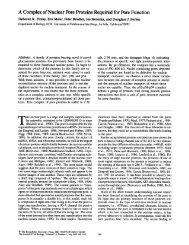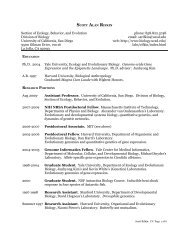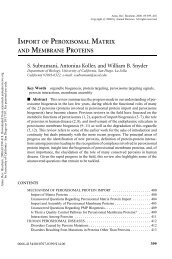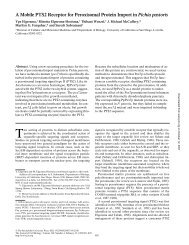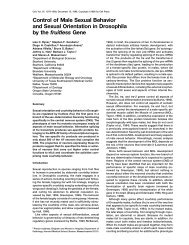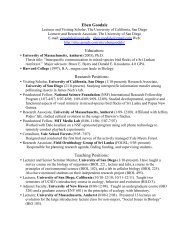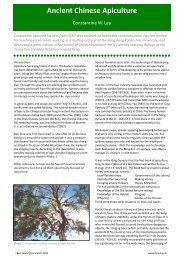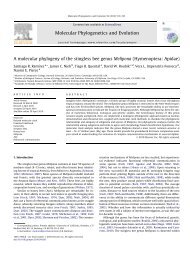Bee Basics - USDA Forest Service - US Department of Agriculture
Bee Basics - USDA Forest Service - US Department of Agriculture
Bee Basics - USDA Forest Service - US Department of Agriculture
Create successful ePaper yourself
Turn your PDF publications into a flip-book with our unique Google optimized e-Paper software.
Often they succeed infooling the inexperiencedobserver <strong>of</strong> bees, as well.<strong>Bee</strong>-flies, another family<strong>of</strong> bee mimics, are parasites <strong>of</strong>many bee species. All flieshave only one pair <strong>of</strong>wings as compared tothe two pair <strong>of</strong> wingspossessed by bees This is asignificant differenceAnother bee-mimicking(possibly bumblebee mimic) flower fly(Mallota posticata).A very common garden visitor,the drone fly, Eristalistenax, which looks like theEuropean honey bee (Apismellifera).between flies and bees, but it is nearlyimpossible to notice when they areflying about. Part <strong>of</strong> the reason for thisdifficulty is that bees’ wings havetiny hooks that lock the front andhind wings together making themappear as just one on each side.There areseveral otherdifferencesthat would bemore helpful to the observer <strong>of</strong> these flowervisitors. <strong>Bee</strong>-flies and syrphid flies havehuge eyes, very short antennae, andskinny legs when compared to bees.Another syrphid, or flower fly waspmimic (Heliophilus pendulus).29



